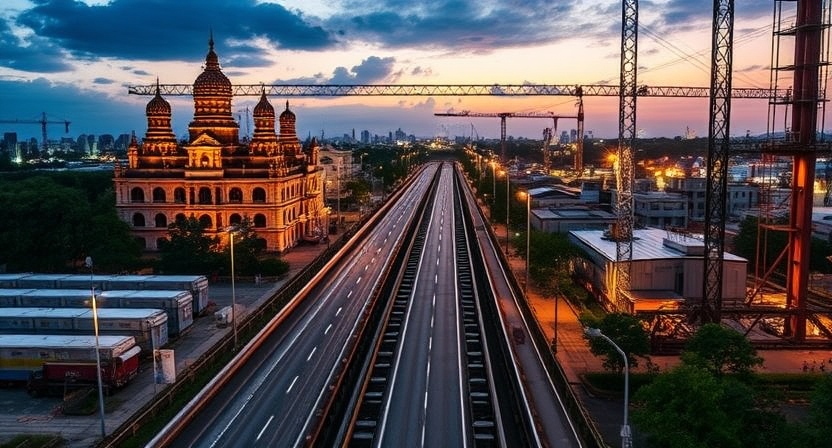Exploring Manufacturing Relocation Opportunities in Cambodia: A Strategic Move for Asia Agents
As production costs in China continue to rise, manufacturers are increasingly looking for cost-effective alternatives to diversify their operations, with a particular focus on the ASEAN-CLMV countries—Cambodia, Laos, Myanmar, and Vietnam. In this context, HKTDC Research recently visited Cambodia to assess its potential as an alternative production base for Hong Kong manufacturers and other international investors, particularly those seeking to expand their footprint in Asia.
In Cambodia, the manufacturing sector offers significant growth potential for Asia agents and international companies looking to relocate or establish new facilities. While Cambodia faces challenges, such as rising labor costs and underdeveloped infrastructure, it remains a competitive option for foreign direct investment (FDI), especially as it integrates further into the ASEAN supply chain.
Cambodia offers an FDI-friendly business environment, making it an attractive destination for manufacturers and Asia agents seeking to expand their operations. The country maintains a relatively low corporate tax rate of 20%, which is more competitive than Myanmar (25%) and Indonesia. The Cambodian government has also introduced a range of investment incentives aimed at boosting productivity and attracting new technology.
Key incentives include:
- 100% foreign ownership of businesses.
- No restrictions on the repatriation of profits or capital.
- A potential tax holiday of up to nine years for qualified projects approved by the Council for the Development of Cambodia (CDC).
Cambodia’s Growing Role in ASEAN’s Integrated Supply Chain
The establishment of the ASEAN Economic Community (AEC) in 2015 has positioned Cambodia as a key player in regional economic integration. As part of the AEC, Cambodia is benefiting from reduced tariffs and non-tariff barriers on goods and services within ASEAN. This integration allows companies operating in Cambodia to tap into a broader regional value chain, making it a strategic location for Asia agents and manufacturers.
One of Cambodia’s key attractions has been its low labor costs. However, recent increases in the minimum wage have somewhat eroded this advantage. As of 2017, the monthly minimum wage for workers in Cambodia’s garment and footwear industry was US$153, a significant rise from previous years. While this is still lower than wages in neighboring countries like Thailand and Vietnam, the wage increase is a concern for businesses looking to keep production costs low.
Moreover, labour productivity in Cambodia has not kept pace with wage growth. Factory managers report that productivity is about 50%–60% of that in China, and skilled labor shortages continue to pose challenges for manufacturers. Despite these issues, Cambodia’s labor force remains relatively abundant, and the country’s government is working to enhance worker training and productivity to better align with regional standards.
Infrastructure remains one of the major challenges for Cambodia’s manufacturing sector. Electricity costs are notably high at US$0.20 per kilowatt-hour (kWh), compared to US$0.08 in Vietnam and US$0.10 in Myanmar. However, the situation is improving, with more stable electricity supply and plans for significant infrastructure upgrades under the Belt and Road Initiative (BRI). Cambodia’s participation in the BRI includes investments in transport, energy, and logistics, which could enhance the country’s competitiveness as a manufacturing base in Southeast Asia.
Despite rising labor costs and infrastructure hurdles, Cambodia remains a viable option for Asia agents and foreign manufacturers looking to diversify their supply chains. The country’s access to preferential trade agreements with major developed countries, combined with its integration into the ASEAN economic framework, positions it as a strategic location for companies targeting regional markets.
The Cambodian government is committed to improving infrastructure, and the ongoing development of road, rail, and energy facilities, bolstered by BRI projects, should mitigate current challenges. In the medium term, these investments will enhance Cambodia’s competitiveness as an alternative manufacturing base within the ASEAN-CLMV region.
For Asia agents and manufacturers considering relocation or diversification, Cambodia remains a strong candidate. While the country faces some challenges related to rising wages and infrastructure, its attractive investment incentives, growing regional integration, and strategic position within ASEAN make it an ideal location for expanding operations. Manufacturers looking to tap into the ASEAN market and take advantage of lower costs should consider Cambodia as part of their growth strategy in the post-pandemic era.

